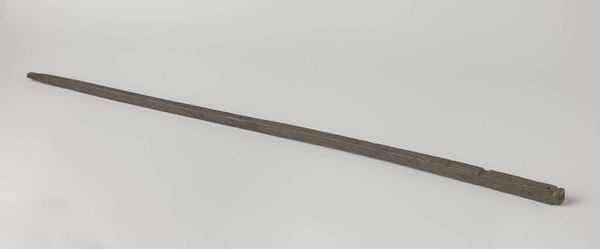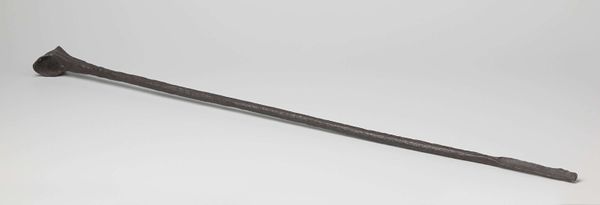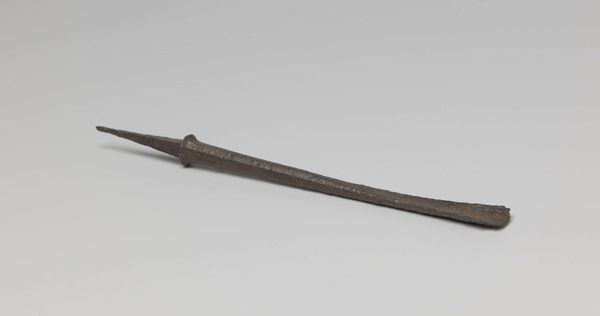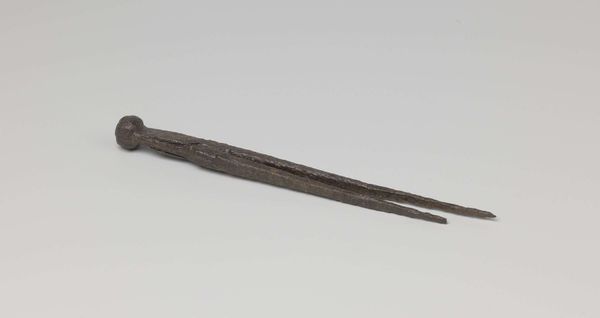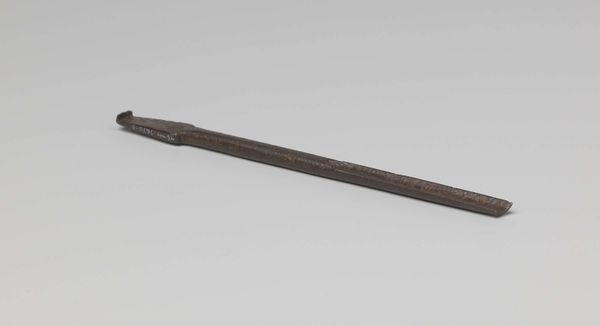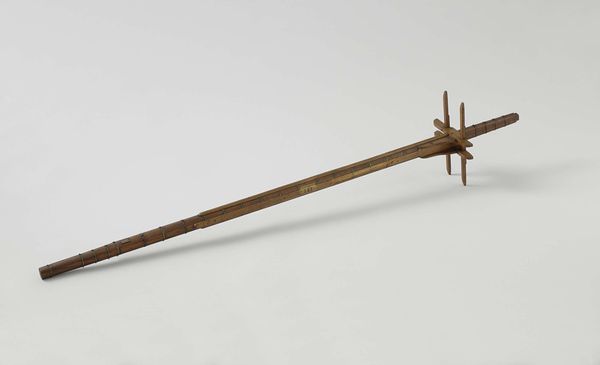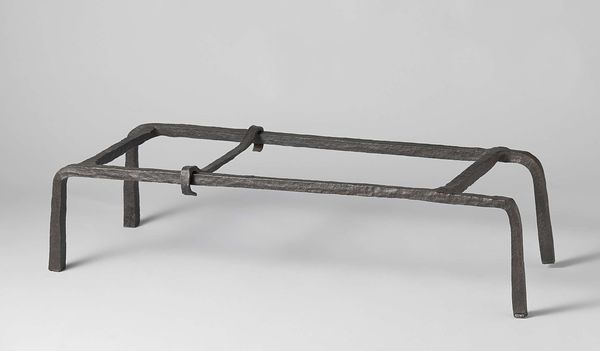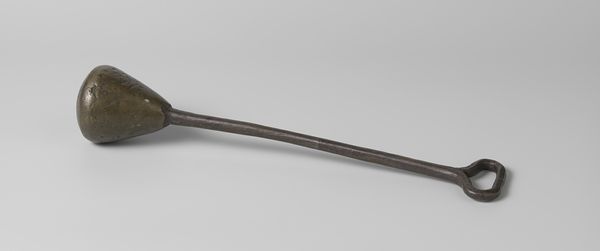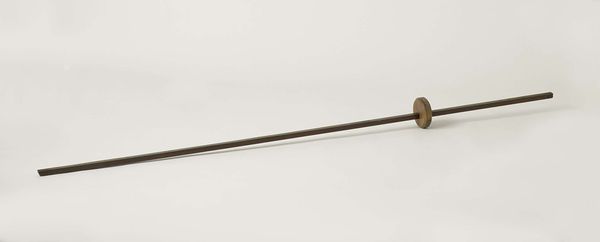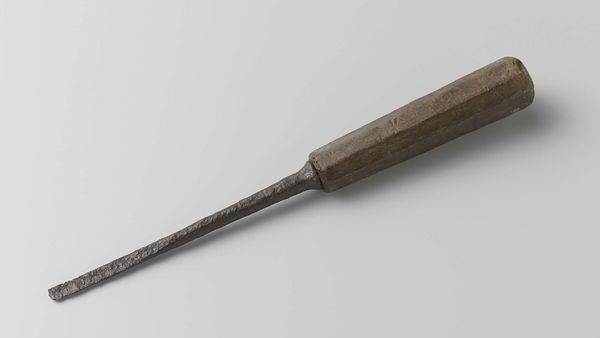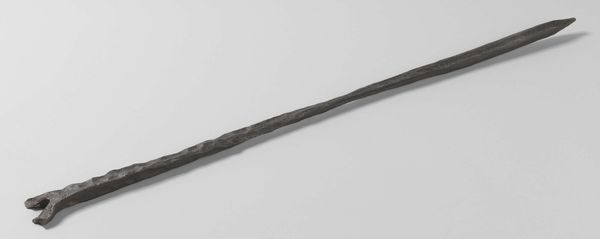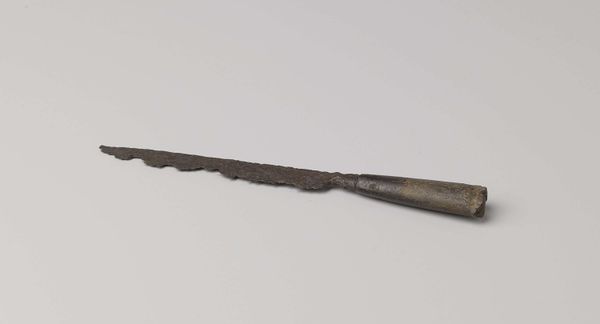
metal, sculpture
#
medieval
#
metal
#
form
#
sculpture
#
history-painting
Dimensions: length 65.5 cm, width 10 cm
Copyright: Rijks Museum: Open Domain
This pole arm, of unknown origin, is made entirely of wrought iron. The processes involved in forging such a weapon would have been intense: heating the metal until malleable, then shaping it with hammer and anvil. The iron's inherent qualities—its weight, its capacity to be both strong and sharp—dictate the weapon's form. You can see the marks of the hammer on its surface. This is not a refined, polished object, but rather something made for functional use. The creation of this weapon involved physical labor, skill, and a deep understanding of the material. The blacksmith, an essential figure in any historical community, held specialized knowledge. Considering this object as craft allows us to appreciate the expertise involved in its making, and the social context of its creation. The pole arm is a reminder that even instruments of conflict are products of human ingenuity and material culture.
Comments
rijksmuseum about 2 years ago
⋮
Naturally, Barentsz’s ship and his crew were well armed. They had to be able to repel pirates, European rivals and potentially hostile Asian ships. On Nova Zembla the men used the weapons chiefly to defend themselves from aggressive polar bears.
Join the conversation
Join millions of artists and users on Artera today and experience the ultimate creative platform.
